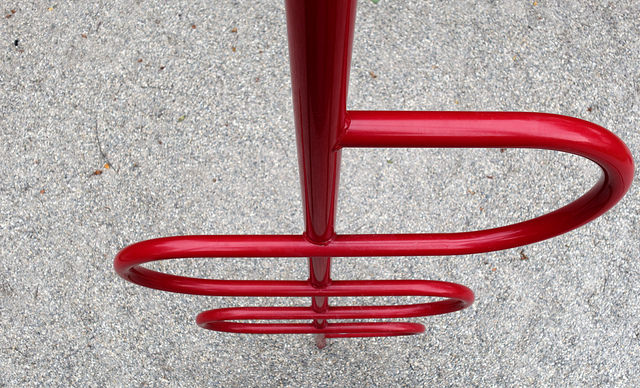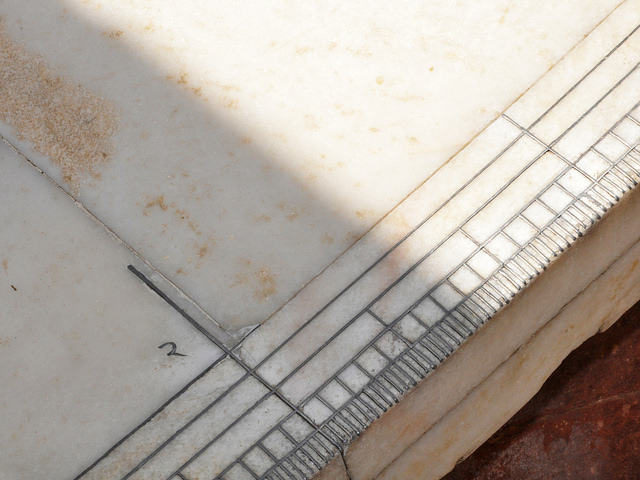Posts Tagged ‘time’
The Best Way To Make Projects Go Faster
 When there are too many projects, all the projects move too slowly.
When there are too many projects, all the projects move too slowly.
When there are too many projects, adding resources doesn’t help much and may make things worse.
To speed up the important projects, stop the less important projects. There’s no better way.
When there are too many projects, stopping comes before starting.
All projects are important, it’s just that some are more important than others. Stop the lesser ones.
When someone says all projects are equally important, they don’t understand projects.
If all projects are equally important, then they are also equally unimportant and it does not matter which projects are stopped. This twist of thinking can help people choose the right projects to stop.
When there are too many projects, stop two before starting another.
Finishing a project is the best way to stop a project, but that takes too long. Stop projects in their tracks.
There is no partial credit for a project that is 80% complete and blocking other projects. It’s okay to stop the project so others can finish.
Queueing theory says wait times increase dramatically when utilization of shared resources reaches 85%. The math says projects should be stopped well before shared resources are fully booked.
If you want to go faster, stop the lesser projects.
Image credit – Rodrigo Olivera
Time Affluence
When you have more than enough money, you have money affluence. With it, you can buy what you want, eat what you want, drive what you want, and travel where you want. But to have this unallocated money, or discretionary money, you probably need to spend a heck of a lot of time working. Climbing the ladder takes a lot of time. And once you’re at the top, you probably have a lot of commitments that pull hard on your calendar. Odds are, if you have unallocated or discretionary money (money affluence), you likely don’t have unallocated or discretionary time (time affluence).
If you have money affluence, but no time affluence, what do you really have?
To understand how much unallocated time you have, here’s an example day. You get up at 6:00 am, leave for work at 6:30, commute for an hour to arrive at work at 7:30, eat at your desk, leave work at 5:00 pm, arrive home at 6:00 and go to bed at 10:00. If this is your day, you have four hours of unallocated time per workday. I know this doesn’t include the realities of cleaning, cooking, yard work, paying bills, running errands, kids’ sporting events, and a number of other commitments, but makes the upcoming math work well and doesn’t demand we acknowledge we have little to no unallocated time.
In the contrived day described above, you’re getting enough sleep but not much else – no exercise, no time to relax during lunch. And, it’s likely you’re trading sleep for the time needed to accomplish the practical realities of daily life. But, let’s just say you have four hours of unallocated time. If you have four hours of unallocated time per day, do you think you have time affluence?
If you reduce your commute to thirty minutes, you have an extra hour of unallocated time (five). That doesn’t sound much, but you increased your unallocated time by 25%. And if you add thirty minutes of unallocated time for lunch and thirty minutes of exercise during the workday, you add another hour of unallocated time, increasing your unallocated time to six hours, or a 50% increase over the four hours of the baseline. But, to be clear, when you assign an activity of your choosing to unallocated time, it’s still unallocated time, but it may be helpful to think of it as discretionary time.
And if you tell your boss that for your first hour of work (from 7:30 to 8:30 am) there will be no meetings, no email, no phone calls, no Skype, no Slack, you increase your unallocated time by another hour, bringing your total up to seven hours, or a 75% increase in unallocated time.
As it stands, the world will take your unallocated time unless you protect it. And you won’t free up more unallocated time unless you grab your calendar and proactively squeeze out some time for yourself.
If you have money affluence, but no time affluence, you don’t have all that much.
Image credit — becosky…
To improve productivity, it’s time to set limits.
 The race for productivity is on. And to take productivity to the next level, set limits.
The race for productivity is on. And to take productivity to the next level, set limits.
To reduce the time wasted by email, limit the number of emails a person can send to ten emails per day. Also, eliminate the cc function. If you send a single email to ten people, you’re done for the day. This will radically reduce the time spent writing emails and reduce distraction as fewer emails will arrive. But most importantly, it will help people figure out which information is most important to communicate and create a natural distillation of information. Lastly, limit the number of word in an email to 100. This will shorten the amount of time to read emails and further increase the density of communications.
If that doesn’t eliminate enough waste, limit the number of emails a person can read to ten emails per day. Provide the subject of the email and the sender, but no preview. Use the subject and sender to decide which emails to read. And, yes, responding to an email counts against your daily sending quota of ten. The result is further distillation of communication. People will take more time to decide which emails to read, but they’ll become more productive through use of their good judgement.
Limit the number of meetings people can attend to two per day and cap the maximum meeting length to 30 minutes. The attendees can use the meeting agenda, meeting deliverables and decisions made at the meeting to decide which meetings to attend. This will cause the meeting organizers to write tight, compelling agendas and make decisions at meetings. Wasteful meetings will go away and productivity will increase.
To reduce waiting, limit the number of projects a person can work on to a single project. Set the limit to one. That will force people to chase the information they need instead of waiting. And if they can’t get what they need, they must wait. But they must wait conspicuously so it’s clear to leaders that their people don’t have what they need to get the project done. The conspicuous waiting will help the leaders recognize the problem and take action. There’s a huge productivity gain by preventing people from working on things just to look busy.
Though harsh, these limits won’t break the system. But they will have a magical influence on productivity. I’m not sure ten is the right number of emails or two is the right number of meetings, but you get the idea – set limits. And it’s certainly possible to code these limits into your email system and meeting planning system.
Not only will productivity improve, happiness will improve because people will waste less time and get to use their judgement.
Everyone knows the systems are broken. Why not give people the limits they need and make the productivity improvements they crave?
Image credit – XoMEoX
Your money or your time, which is worth more?
 If you were given a choice – for the same number of hours worked you get 20% more money, or for 20% fewer hours worked you get the same money – which would you choose?
If you were given a choice – for the same number of hours worked you get 20% more money, or for 20% fewer hours worked you get the same money – which would you choose?
In real life it would not go that way, but set that aside for a moment. It’s a thought experiment, a choice between theoretical options as it assumes you’ll actually work the same hours for the extra money and assumes you’ll actually work less and get paid the same. If you actually had the choice, which would you choose?
To me it comes down to two questions: If you had more money, what would you actually do with it? And, if you had more free time, what would you actually do with it? But these questions aren’t theoretical. No kidding, with your current lifestyle, with your existing priorities, with how you live your life, what would you do with more money and what would you do with more time?
With more money, would you pay off some bills, buy some new stuff, save for college, go on vacation, donate to charity? With the money some well-worn options come quickly to mind. Would 20% more money make a substantial difference in your life, or would you slowly ratchet up your spending so the extra money is no longer extra, but essential?
With more time, what would you do? What are the top three that jump immediately into your brain? I think this one’s tougher. If instead of five days a week you worked four, what would that day off look like? If you had every Friday off (in addition to your existing vacation days), what would you do? Sure, for the first four Fridays you’d catch up on your sleep, but then what? The time-money seesaw is so lopsided, we don’t know even how to think about this.
I think the best use of your extra time would be to figure out what to do with your extra time. What if on your fifth Friday, with your sleep deficit behind you, you did nothing? I mean nothing in the true sense – you get up at your regular time, eat breakfast, shower up, and do nothing. I mean eight hours with no electronics, no laptop, no video games, no TV, no books, no phones, where it’s just you and your tedious thoughts? Actually, I think that would be too much time with yourself, and one hour a week would be enough to set you on your path.
Before you can decide what you’d do with your extra time, you have to figure out what you want from life and why you want it. And to do that, you need to allocate a regular time to sit and do nothing. And you don’t even have to think about what you want and why you want it. If you sit, it will find you.
Truth is you don’t need an extra day off every week to carve out an hour and sit quietly. But if you do sit quietly you will figure out what you want out of life and why you want it and then you will come up with some wonderful new ways to spend your time. And because those wonderful new things will be deeply grounded in what you want out of your life – you’ll create the time to actually do them.
We’re clear what our money will buy, but less clear on what our time is worth. You’re one hour away from tipping the balance and clearing things up.
Occam’s Razor For Innovation
 There are many flavors of innovation – incremental, disruptive, and seven flavors in between. And there is lots of argument about the level of innovation – mine’s radical and yours isn’t; that’s just improving what we already have; that’s too new – no one will ever buy it. We want to label the work in order to put it in the right bucket, to judge if we’re doing the right work. But the labels get in the way – they’re loaded with judgments, both purrs and snarls.
There are many flavors of innovation – incremental, disruptive, and seven flavors in between. And there is lots of argument about the level of innovation – mine’s radical and yours isn’t; that’s just improving what we already have; that’s too new – no one will ever buy it. We want to label the work in order to put it in the right bucket, to judge if we’re doing the right work. But the labels get in the way – they’re loaded with judgments, both purrs and snarls.
Truth is, innovation work falls on a continuum of newness and grouping them makes little sense. And, it’s not just newness that matters – it’s how the newness fits (or doesn’t) within the context of how things happen today and how customers think they should happen tomorrow. So what to do?
Customers notice the most meaningful innovations, and they notice the most meaningful ones before the less meaningful. Evaluate the time it takes a customer to notice the innovation and there may be hope to evaluate the importance of the innovation.
The technology reduces cost, and at the end of the month when the numbers are rolled up the accountants can see the improvement. This is real improvement, but there’s a significant lag and the people doing the work don’t see it as meaningful. This one’s a tough sell – buy this new thing, train on it, use it for three months, and if you keep good records and do some nifty statistics you’ll see an improvement.
The technology reduces scrap, and at the end of the week the scrap bin will be half full instead of fully full. Scrap is waste and waste reduction is real improvement. This is an easier sell – buy it and train on it and at the end of the week you’ll notice a reduction in scrap. This is important but only to those who are measured on scrap. And today the scrap is emptied every week, now we can empty it every other week. The time to notice is reduced, but the impact may not be there.
The technology increases throughput, and at the end of the shift the bins will be fuller than full. Here – try it for a shift and see what you think. If you like it, you can buy it. I’ll be back tomorrow with a quote. This is noticeable within eight hours. And at the end of eight hours there are more things that can be sold. That’s real money, and real money gets noticed.
The technology makes the product last two hours instead of one. Here – try it for a couple hours. I’ll go get a coffee and come back and see what you think. You won’t have to stop the machine nearly as often and you’ll put more parts into finished goods inventory. The technology gets noticed within two hours and the purchase order is signed in three.
Where the old technology was load, this is quiet. Don’t bother with ear protection, just give it a go. Pretty cool, isn’t it. Go get your boss and I’ll sell you a couple units right now. This one shows its benefits the end user right away – first try.
The most meaningful innovations get noticed instantly. Stop trying to label the innovation and simply measure how long it takes your customer to notice.

 Mike Shipulski
Mike Shipulski